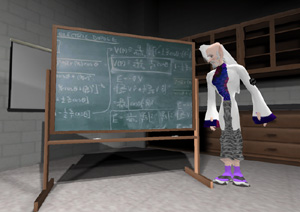 Professor Ozymandias Spark |
Science benefits from working on an open source model. Peer review, publication and dessemination of experimental results, public education, access to higher education, all of these contribute to a large number of people with the tools and resources to help them contribute productively to our collective body of knowledge.
Peers on the World Wide Web includes anyone with internet access. The open access articles the Public Library of Science publishes online disseminate more quickly than articles published in the traditional journals. Colaborative database projects like the emerging Encyclopedia of Life and combining databases of genome data allow scientists to cross-polinate ideas and develop new chimeric memes.
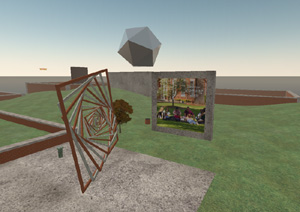 Playgrounds for Minds |
Science relies increasingly on computers. The field of Computational Biology has made burgeoning contributions to our understanding of genetics. Distributed computing projects not only take advantage of the world’s idle computer processing time, but bring everyday people into the realm of scientific experimentation and allow them to make meaningful contributions as well. Peer review journals only publish successful findings, but by publishing the results of unsuccessful experiments, Scientists can see what experiments have already failed and avoid wasting time.
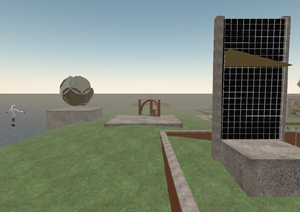 Playgrounds for Minds |
In the virtual world of Second Life, Sandboxes are a popular method of collaboration. These locations allow users to construct whatever they want and then leave their experiment for others to play with or start over. Presently sandboxes are mostly being used for architecture and similar designs, but the potential for science applications are unbounded.
NOAA has replicated its exhibits in many different SL locations. The National Physical Laboratory (NPL) has exhibits at the SL Science Center, ISM, and COLABs, plugging their TRUTHS satellite model for tracking atmospheric change.
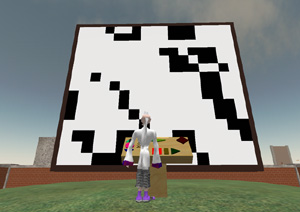 The Game of Life |
It’s interesting to think of the dynamics of museum exhibits in SL. Because they are virtual, the same exhibit can exist in several museums at once, they don’t have to tour. It reminds me of Thomas Jefferson’s observations on ideas, that we can share our ideas and our act of sharing them doesn’t lessen our knowing them.
Cyberspace is a true markeplace of ideas, a meme replication factory and testing ground for new ideas. Since science is a communal body of empirically-derived knowledge, it makes sense that it should take full advantage of the mass-communication and mass-feedback out here for scientifcally minded peers, but, primarily, it needs to be used to bring new minds into the science fold.
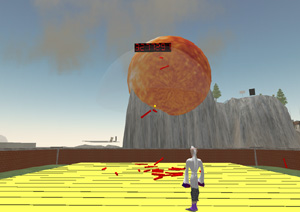 Buffon Shooter 3-D Demonstration of Buffon’s Needle |
Which brings me to the issue of the Internet’s accessibility. With science blogs, documentaries on video sites, science podcasts, and kids sites communicating science at a wide variety of levels and methods. Individual audience members can plug into the science exponent that most groks with their personal learning style.
With $100 laptops (now $175) potentially bringing affordable Internet access to children all over the world, the number of peers will grow expotentially. With improved graphical user interfaces, streaming audio and video, literacy no longer need be a requirement for enjoying the beauty of scientific ideas, or for contributing them. With the emergence of Second Life, lack of proximity to a museum no longer prevents students from taking field trips in virtual reality.
All of these advances, bringing amateurs (like myself) into the fold, also evoke contributions from novel perspectives, and ultimately benefit the whole.
All but one of the images accompanying this article were taken at Elon University’s Second Life display.
Changed the word “desseminate” to “disseminate” on the advice of Kristina Raisinbran, grammar and syntax expert.